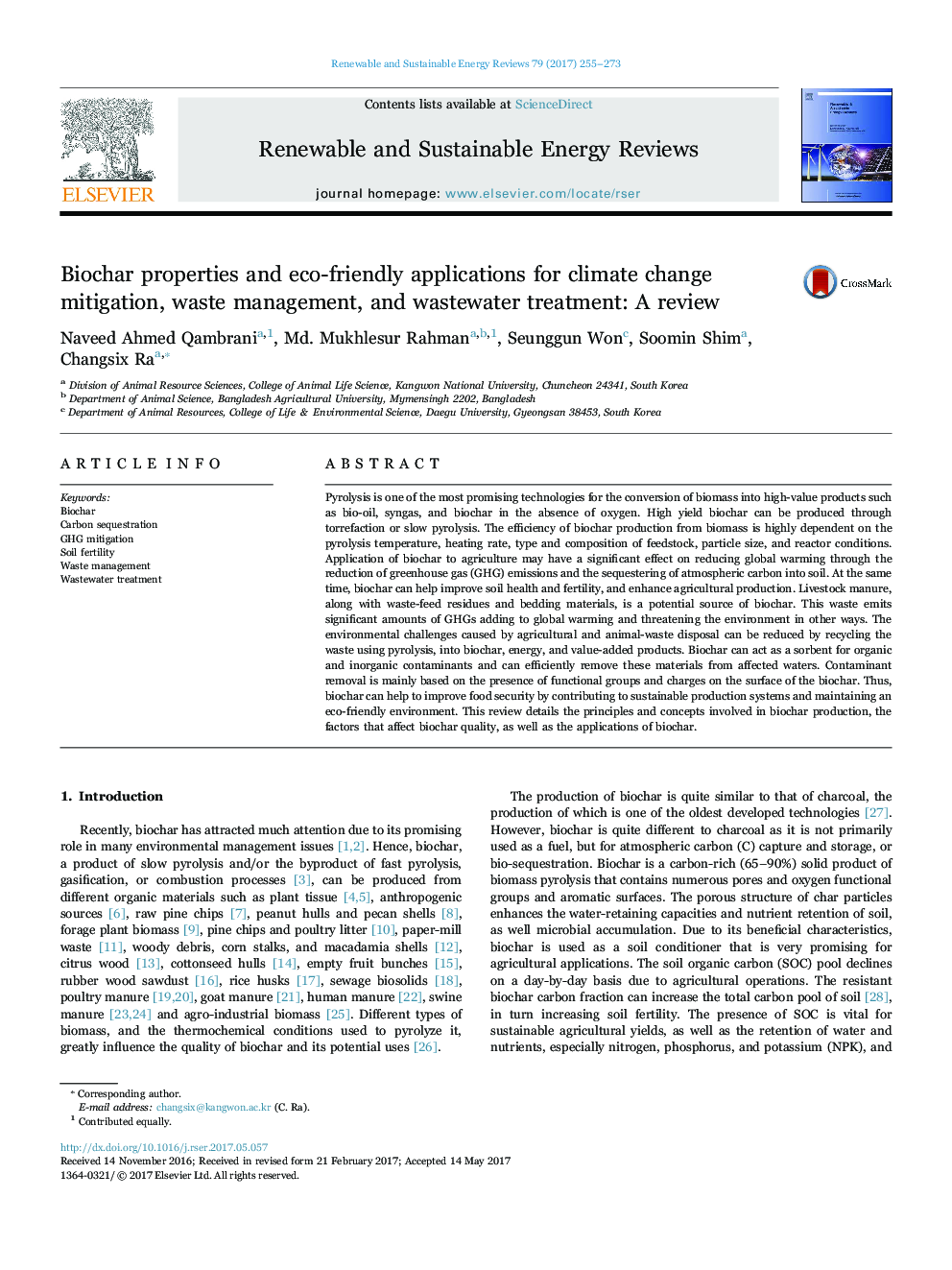| Article ID | Journal | Published Year | Pages | File Type |
|---|---|---|---|---|
| 5482566 | Renewable and Sustainable Energy Reviews | 2017 | 19 Pages |
Abstract
Pyrolysis is one of the most promising technologies for the conversion of biomass into high-value products such as bio-oil, syngas, and biochar in the absence of oxygen. High yield biochar can be produced through torrefaction or slow pyrolysis. The efficiency of biochar production from biomass is highly dependent on the pyrolysis temperature, heating rate, type and composition of feedstock, particle size, and reactor conditions. Application of biochar to agriculture may have a significant effect on reducing global warming through the reduction of greenhouse gas (GHG) emissions and the sequestering of atmospheric carbon into soil. At the same time, biochar can help improve soil health and fertility, and enhance agricultural production. Livestock manure, along with waste-feed residues and bedding materials, is a potential source of biochar. This waste emits significant amounts of GHGs adding to global warming and threatening the environment in other ways. The environmental challenges caused by agricultural and animal-waste disposal can be reduced by recycling the waste using pyrolysis, into biochar, energy, and value-added products. Biochar can act as a sorbent for organic and inorganic contaminants and can efficiently remove these materials from affected waters. Contaminant removal is mainly based on the presence of functional groups and charges on the surface of the biochar. Thus, biochar can help to improve food security by contributing to sustainable production systems and maintaining an eco-friendly environment. This review details the principles and concepts involved in biochar production, the factors that affect biochar quality, as well as the applications of biochar.
Keywords
Related Topics
Physical Sciences and Engineering
Energy
Renewable Energy, Sustainability and the Environment
Authors
Naveed Ahmed Qambrani, Md. Mukhlesur Rahman, Seunggun Won, Soomin Shim, Changsix Ra,
